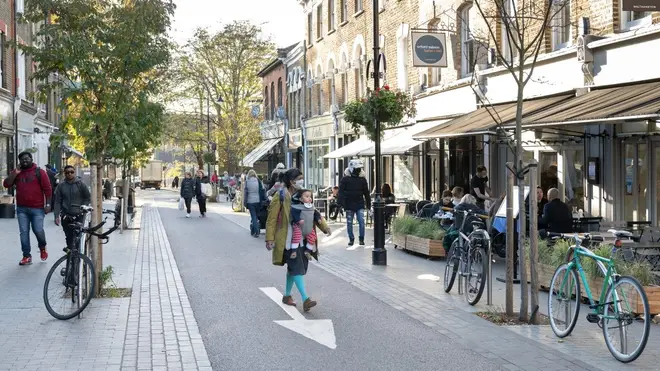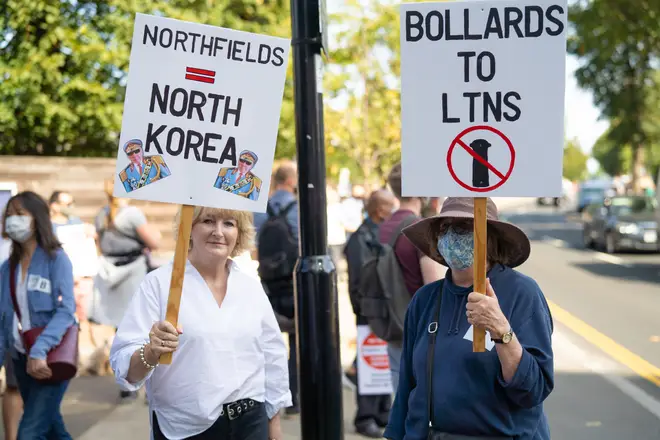
Dean Dunham 9pm - 10pm
14 May 2021, 16:43

Low Traffic Neighbourhoods (LTNs) have entered the news once again after criticism from Metropolitan Police Commissioner Dame Cressida Dick.
The initiative from Transport for London was expanded last summer as part of a whole host of measures designed to improve London's traffic, road safety and pollution issues.
The scheme has been criticised by some, including Dame Cressida, over the changes the initiative is making to the layout of the capital's roads.
But what are Low Traffic Neighbourhood, why have they been introduced and why are they so controversial?
READ MORE: LTNs have 'made it harder' for police to respond to emergencies

The scheme is designed to reduce where cars can travel by placing bollards and large wooden planters in the road.
The bollards prevent vehicles larger than bicycles and motorcycles from driving through them, with the aim of making the roads safer for cyclists and lowering air pollution in residential areas.
They have been in London since the 1970s but more were introduced in spring 2020, attracting criticism from some.
READ MORE: London's 'Low Traffic Neighbourhood cycle lanes are health disaster,' says taxi driver

Low Traffic Neighbourhoods can make policing more difficult
LTNs are in place across Camden, Croydon, Ealing, Hounslow, Lambeth, Newham and Waltham Forest.
A similar scheme has also been introduced in parts of Oxford.
READ MORE: Caller attacks 'disgraceful' local councils funnelling traffic through poor neighbourhoods
London has seen a significant increase in traffic in residential areas in the past decade, while traffic on main roads has remained mostly the same.
Figures gathered by Transport for London show more than 80% of deaths on London’s streets are people walking, cycling or on motorbikes and mopeds.
It argues that if traffic keeps increasing without changes in neighbourhoods, streets will become even more unsafe for people to walk and cycle on.
The scheme was also introduced to tackle the capital's dangerous - and at times illegal - air pollution levels.
TfL says it aims to make areas where children play outside and routes where people walk and cycle safer.

The scheme has attracted criticism from some drivers who are blocked off from easy-access routes in neighbourhoods when they need to travel.
It is generally favoured by cyclists and those who use public transport to travel across the capital.
There are also regular discussions between the emergency services and TfL over how to improve accessibility for police cars, ambulances and fire trucks which can get caught out by the bollards.
Met Police Commissioner Cressida Dick on Friday told LBC that LTNs can prevent police giving chase to violent criminals.
"I accept that it is really getting difficult for [officers] in some places but it may be that other people’s deaths are reduced," she said.
One cyclist later told LBC they thought police were failing to "innovate" with the new system.